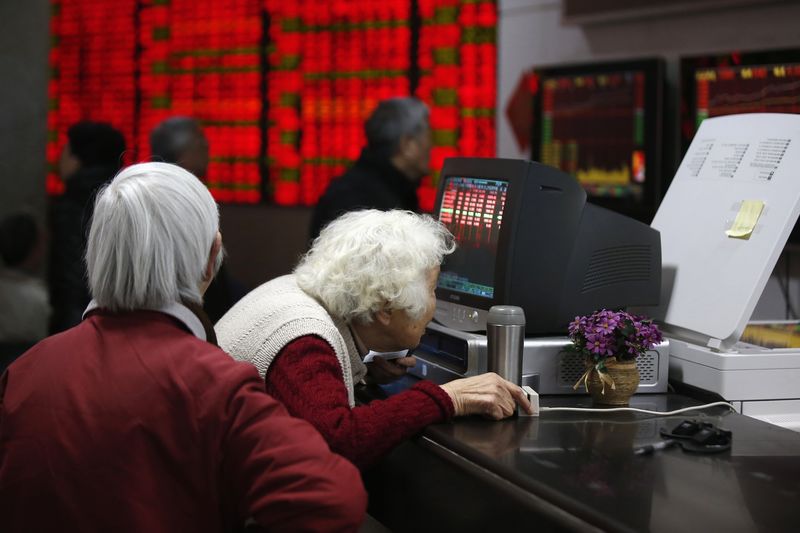Price of BTC today
BTC Price History USD
| Change | Amount | % |
|---|---|---|
| coinPrice-pricePerformance-row-percent_change_24h | $ 1,420.33 | +3.96% |
| coinPrice-pricePerformance-row-percent_change_30d | $ 10,704.32 | +29.87% |
| coinPrice-pricePerformance-row-percent_change_60d | $ 13,816.88 | +38.56% |
| coinPrice-pricePerformance-row-percent_change_90d | $ 8,223.92 | +22.95% |
Regarding Bitcoin (BTC)
Bitcoin stands as one of the most widely recognized digital currencies in today’s financial landscape. Satoshi Nakamoto introduced it in 2009, propelling Bitcoin to the pinnacle of the cryptocurrency market in terms of market capitalization. Bitcoin’s inception laid the groundwork for the proliferation of various alternative cryptocurrencies and marked a transformative moment in the realm of digital payment solutions.
As the inaugural cryptocurrency, Bitcoin has undergone significant transformations in its valuation. Interestingly, you need not acquire a whole Bitcoin, as it is divisible into smaller units known as satoshis, a tribute to its enigmatic creator. A single satoshi is equivalent to 0.00000001 Bitcoin.
Bitcoin exists solely in the digital realm, devoid of a physical representation. Its transactions are entirely transparent and impervious to censorship, facilitating a global and censorship-resistant medium for financial exchanges. This system derives its foundation from a decentralized network of computers, referred to as “nodes,” rather than relying on centralized banking or governmental entities, thus promoting the concept of “decentralization.”
Why Does the Price of Bitcoin Fluctuate So Wildly?
Bitcoin’s price has been remarkably volatile since its inception, owing to several influential factors. Firstly, the cryptocurrency market operates on a smaller scale compared to traditional financial markets, making it susceptible to significant price swings driven by substantial transactions. Secondly, the value of Bitcoin is intricately linked to public sentiment and speculative activity, resulting in short-term price fluctuations. Factors such as media coverage, influential opinions, and regulatory developments introduce uncertainty, affecting the dynamics of supply and demand, thereby contributing to price oscillations.
Another crucial factor stems from Bitcoin’s fixed supply. With only 21 million Bitcoins slated to ever exist, fluctuations in demand can lead to dramatic price shifts. This situation is further exacerbated by the presence of “whales,” individuals or entities holding substantial amounts of Bitcoin, whose sizable transactions can exert considerable influence on the market.
When Was Bitcoin Invented?
Bitcoin was brought into existence in 2009 by an unidentified individual or group using the pseudonym Satoshi Nakamoto. This digital asset operates on a decentralized, peer-to-peer network powered by blockchain technology, enabling users to securely and anonymously engage in transactions without intermediaries. Satoshi Nakamoto unveiled the Bitcoin whitepaper in 2008, presenting the cryptocurrency’s design and underlying principles. The first-ever Bitcoin transaction, involving the transfer of 10 Bitcoins to a developer, transpired on January 12, 2009. Since that momentous event, Bitcoin has gained momentum as an alternative store of value and a revolutionary payment system, reshaping the financial sector.
Who Is the Creator of Bitcoin?
The true identity of Bitcoin’s creator remains shrouded in mystery, known only through the pseudonym Satoshi Nakamoto. The genesis of Bitcoin’s innovation occurred in 2008 when Nakamoto released the whitepaper elucidating the cryptocurrency’s decentralized, peer-to-peer architecture and utilization of blockchain technology. In 2009, Nakamoto mined the initial Bitcoin block, with the inaugural Bitcoin transaction occurring on January 12 of the same year. Despite extensive investigations and conjecture, the actual identity of Satoshi Nakamoto remains undisclosed.
Numerous individuals have been put forward as possible candidates for Satoshi Nakamoto, but none of these claims have been definitively substantiated.
How Does Bitcoin Operate?
Bitcoin functions within a decentralized, peer-to-peer network, enabling individuals to conduct transactions without the involvement of intermediaries. The transparency and security of transactions are ensured by the foundational blockchain technology, which stores and verifies transaction data. Miners validate transactions by solving intricate mathematical problems using computational power. The first miner to successfully solve the problem is rewarded with cryptocurrency, creating new Bitcoins. Once validated, the data is permanently recorded on the existing blockchain. Bitcoin offers an innovative and secure alternative for conducting transactions, redefining the traditional financial landscape.
When Is the Next Bitcoin Halving?
Anticipated for April 2024, the next Bitcoin halving’s precise date is contingent on the blockchain’s block height. The term “block height” refers to the number of blocks that precede a specific block in a blockchain. Bitcoin experiences a halving event every 210,000 blocks, and the forthcoming halving is expected in April 2024 when the block height reaches 840,000.
These halving events transpire approximately every four years, resulting in a halving of the rewards granted to Bitcoin miners for creating new blocks. The Bitcoin protocol incorporates this mechanism to maintain its value as a deflationary currency, seeking to prevent the devaluation that often affects inflationary currencies over time by reducing the issuance of new Bitcoins.
Will Bitcoin Halving Impact BTC’s Price?
Historically, the months leading up to a halving event have witnessed an increase in Bitcoin’s price as investors and traders anticipate a supply shortage. Post-halving, if demand continues to outstrip the reduced supply, the price may continue to rise. Additionally, market sentiment, regulatory developments, and global events can also exert influence on Bitcoin’s price. To gain a deeper understanding of how Bitcoin halving functions, you can follow our Bitcoin Halving Countdown. For real-time updates on the live price of Bitcoin (BTC), you can refer to Binance.
Analyzing the Factors Behind Today’s Bitcoin Price Surge”
Introduction:
Bitcoin, the flagship cryptocurrency, has experienced significant price movements in recent times. Today, Bitcoin’s price is soaring, prompting speculation and interest from both retail and institutional investors. In this article, we will delve into the various factors contributing to the surge in Bitcoin’s price and explore the dynamics at play.
Market Sentiment:
Market sentiment plays a pivotal role in cryptocurrency price movements. Today, Bitcoin’s price is up due to a surge in positive sentiment. Factors such as growing acceptance of cryptocurrencies, increased institutional interest, and favorable regulatory developments have combined to create an optimistic atmosphere in the crypto market. Investors and traders are exhibiting confidence in Bitcoin as a store of value and an inflation hedge.
Institutional Adoption:
Institutional adoption of Bitcoin has been a game-changer for the cryptocurrency. Large financial institutions, including some of the world’s biggest corporations, have started to invest in and hold Bitcoin. Today’s price surge can be attributed to ongoing institutional interest and investment. Companies are diversifying their portfolios with Bitcoin, recognizing it as a digital asset with long-term potential.
Regulatory Clarity:
One of the significant factors behind the current Bitcoin price increase is the increasing regulatory clarity in various jurisdictions. Governments are gradually developing comprehensive frameworks for cryptocurrencies, providing a level of certainty to investors and businesses. This regulatory clarity has boosted confidence and interest in Bitcoin, thereby driving its price higher.
Macro Economic Factors:
Global economic conditions also impact Bitcoin’s price. Uncertainty in traditional financial markets, concerns about inflation, and the quest for alternative investments have contributed to Bitcoin’s surge. Investors are increasingly turning to Bitcoin as a hedge against economic instability and currency devaluation.
Supply and Demand Dynamics:
Bitcoin’s supply and demand dynamics are essential contributors to its price fluctuations. Bitcoin has a fixed supply of 21 million coins, and the pace at which new Bitcoins are created halves roughly every four years in a process known as “halving.” Today’s price increase may be linked to the scarcity of Bitcoin, with demand continuing to outstrip the reduced supply.
Technological Advancements:
Technological advancements in the cryptocurrency space can also drive Bitcoin’s price. Innovations in the blockchain technology that underlies Bitcoin, such as scalability solutions and layer-two protocols, have the potential to improve the efficiency and utility of Bitcoin, making it a more attractive investment.
Geopolitical Factors:
Geopolitical events and uncertainties can have an impact on Bitcoin’s price. Issues like trade tensions, currency devaluations, and political instability can prompt investors to seek refuge in non-traditional assets like Bitcoin. These factors, when combined, can drive up demand and subsequently the price of Bitcoin.
Increased Retail Participation:
Retail investors have become increasingly interested in cryptocurrencies, and their participation in the market can contribute to price surges. Accessible trading platforms, educational resources, and a growing awareness of cryptocurrencies have encouraged more individuals to invest in Bitcoin.
Technological Adoption:
As Bitcoin gains traction, its use in real-world applications and industries continues to expand. The integration of Bitcoin as a means of payment by various companies and the development of decentralized finance (DeFi) platforms utilizing Bitcoin can fuel demand and positively impact its price.
Media and Public Awareness:
Media coverage and public awareness can influence Bitcoin’s price. Positive news and increased attention from mainstream media outlets can attract new investors and drive up demand, contributing to price gains.
Conclusion:
Today’s surge in Bitcoin’s price is the result of a complex interplay of multiple factors, including market sentiment, institutional adoption, regulatory developments, economic conditions, supply and demand dynamics, technological advancements, geopolitical events, increased retail participation, technological adoption, and media coverage. It’s essential to recognize that Bitcoin’s price is inherently volatile, and while today’s price is up, future fluctuations are inevitable. Investors should conduct thorough research and exercise caution when participating in the cryptocurrency market, keeping in mind that the cryptocurrency landscape is subject to rapid changes and evolving dynamics.









